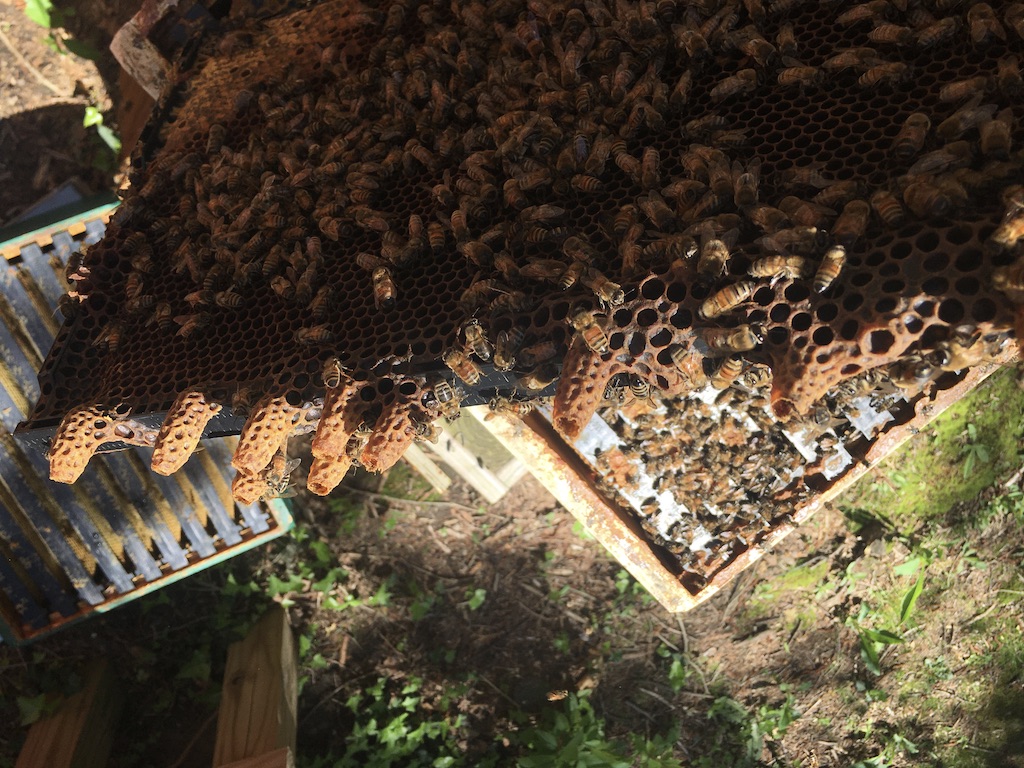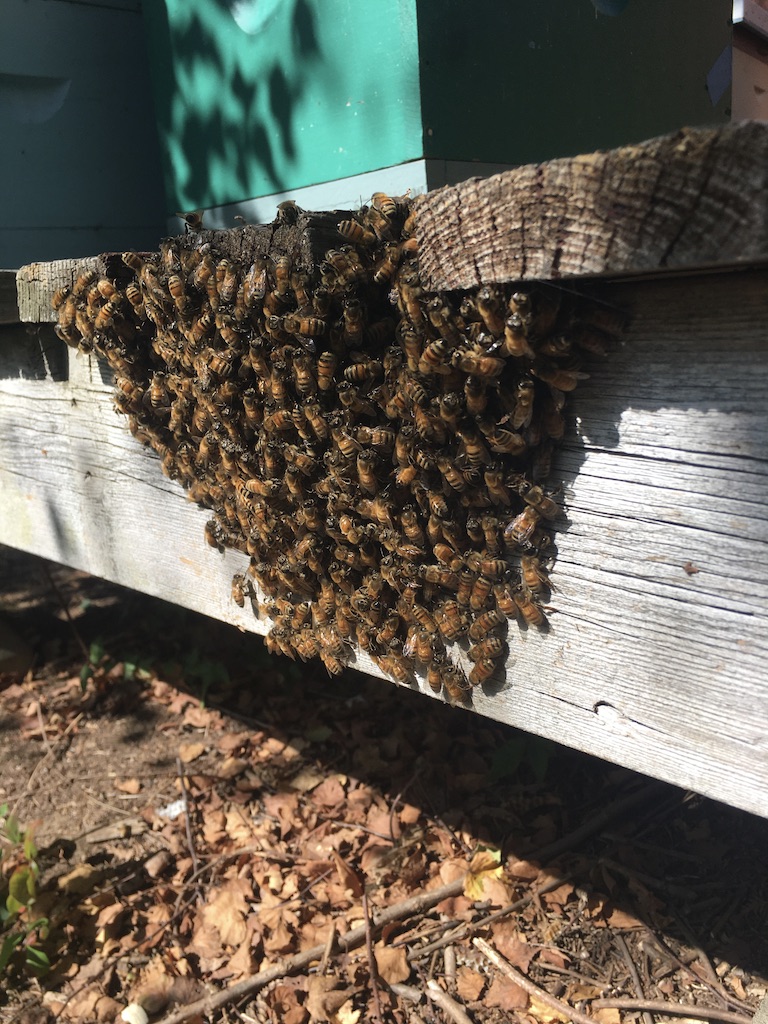By Bill O’Hern
What is swarming? Swarming is the natural way the honeybee propagates the species. It turns a healthy strong hive into two or more hives. Thus enabling the honeybee to spread and infiltrate various locations.
What leads to swarming? There are several environmental and biological stimuli that cause a hive to swarm. Many of these stimuli are related and interdependent. Examples of environmental stimuli; lengthening daylight, consistent warmer weather, and increased nectar availability. Examples of biological stimuli are: Colony congestion – lots of bees and nectar coming in, nowhere for the queen to lay eggs, dilution of the queen’s pheromone – more bees equates to less pheromone to go around to everyone, drones present – part of the preparation for swarming, aging queen – older queens are more likely to swarm, and the presence of queen cells – the hive is ready to swarm.
What happens when the hive swarms? The simple answer is that 50% or more of the hive leaves with the queen. They form a cluster near the hive. Scout bees find a suitable location and that cluster flies off to establish a new hive. That new location could be a hollow in a tree, stone wall, or a building.

The old hive has resources of pollen and nectar, brood of various stages, drawn comb, and usually multiple queens cells. These queen cells are normally found at the bottom of a frame. Each ripening queen cell will produce a virgin queen. Many times the first one to hatch will kill the other queens while they are still in their cells. In a couple of days, her exoskeleton will harden and she will conduct mating flights and mate with 10-20 drones. If everything goes well, she will then start laying eggs to build up the population again.
Are swarms bad? Depends on why you’re raising honeybees. If you’re raising them to produce honey, watching that swarm fly away is watching your honey crop fly away. If you just want to help honeybees, then swarming isn’t bad. However, living in suburbia….. Everyone knows the plight of the honeybee and wants to help. When a swarm of 10-15,000 bees flies into someone’s yard, NIMBY comes out in full force. This can lead to conflict in you keeping bees at your apiary and potential bad press.
So what can we do to manage our hives to prevent swarms? Well, we can’t do anything about the environmental stimuli. What we can control is colony congestion, aging queen, and swarm cells. I have six steps that can help prevent swarms:
- Re-queening. Obtain a new queen that has been born and mated after the summer solstice and re-queen your hive. A young queen produces plenty of queen pheromone and lessens the swarm impulse.
- Add supers or drawn comb for space. Drawn comb for the brood area and supers for the bees to store nectar in (before the flow). This helps in reducing congestion.
- Equalize colonies. This beefs up weak colonies and removes population and adds space to strong colonies. Like #2 above, open up the brood area on strong colonies. Remove capped brood place in weaker colonies and install drawn comb in its place.
- Split your colonies. Just before nectar flow, if you have a very strong colony, split that colony. You are basically swarming your hive but at your convenience.
- Remove swarm cells. Every 7-10 days go through every frame and remove any swarm cells. There are risks to this. You may miss a cell and the hive will swarm. The hive may have already swarmed and you’re killing your queen for the hive.
- Clip the wing of the queen. If all else fails, the hive will still swarm, but it will not go very far and you will be able to capture it.

Everyone who keeps bees in suburbia should also put up a swarm trap. There are commercial ones available as well as you can build your own. The optimal factors are: size is about 40 liters which is the size of one deep box, height is 12-15 feet off the ground, opening orientation south or southeast, opening 2-3 inches long by 1 inch wide. You can put an attractant in the box such as swarm commander or lemongrass essential oil. Old brood comb also works but attracts wax moths.
You never know you may capture your swarm or someone else’s swarm. A swarm in May is worth a bale of hay, a swarm in June is worth a silver spoon, and a swarm in July isn’t worth a fly. Late season swarms – kill the queen and combine with a weaker hive.
On a final thought, try to stay ahead of your bees, anticipate their needs, and be ready for what they will throw at you. Remember the bees don’t read the books on beekeeping.


